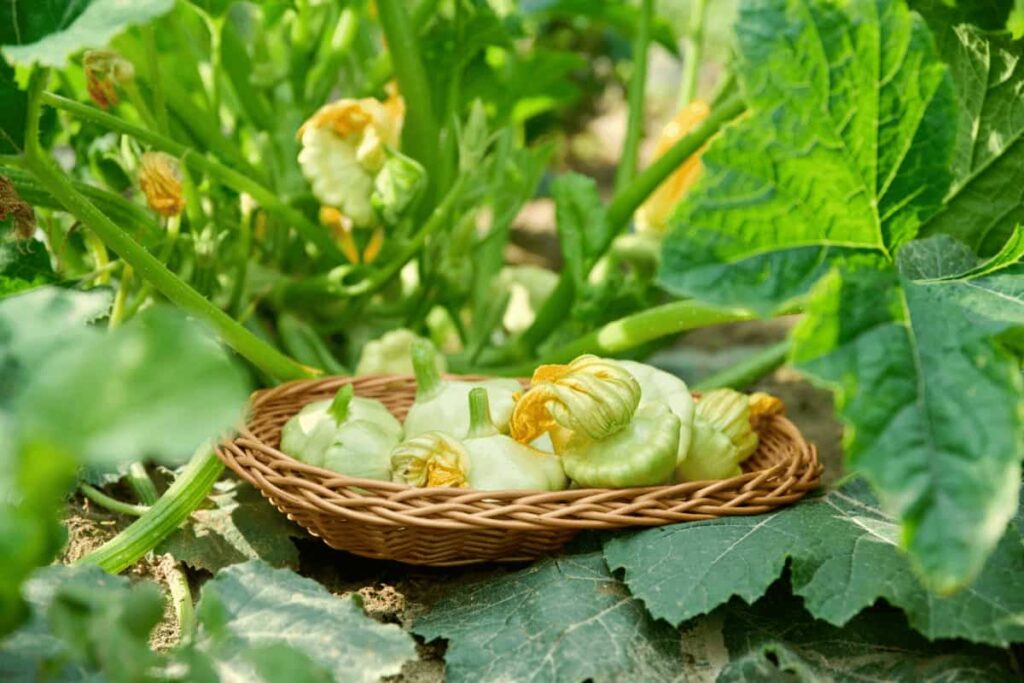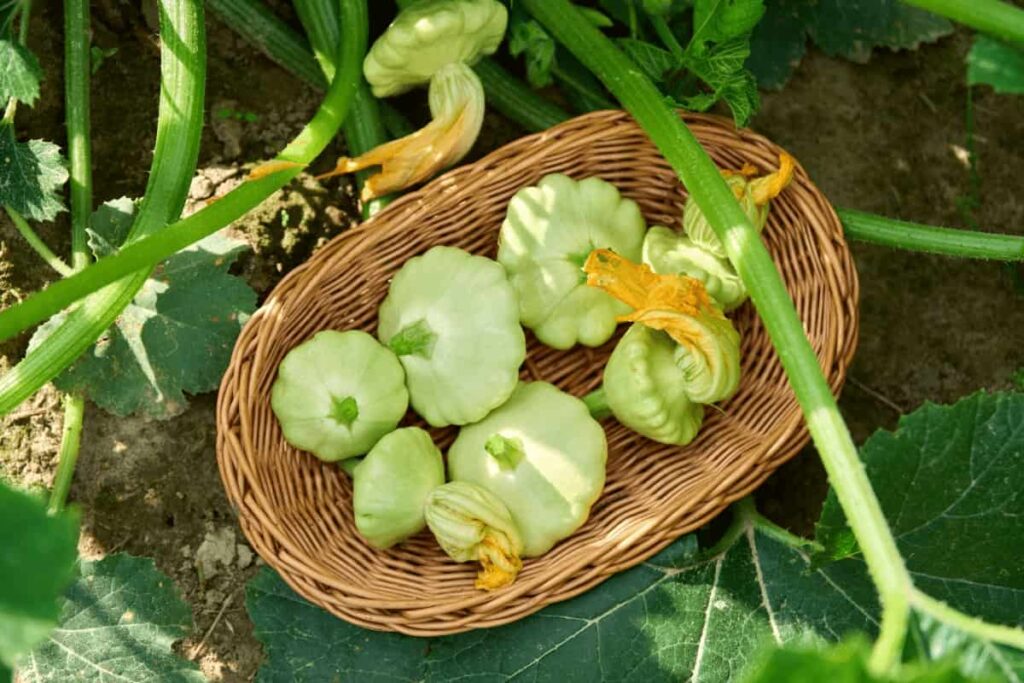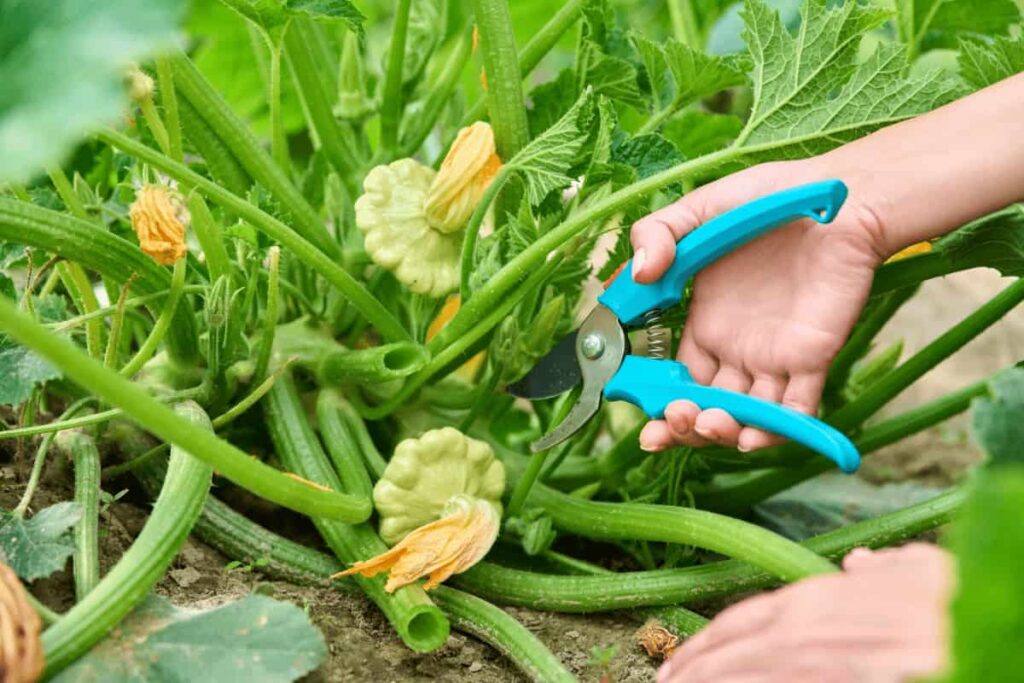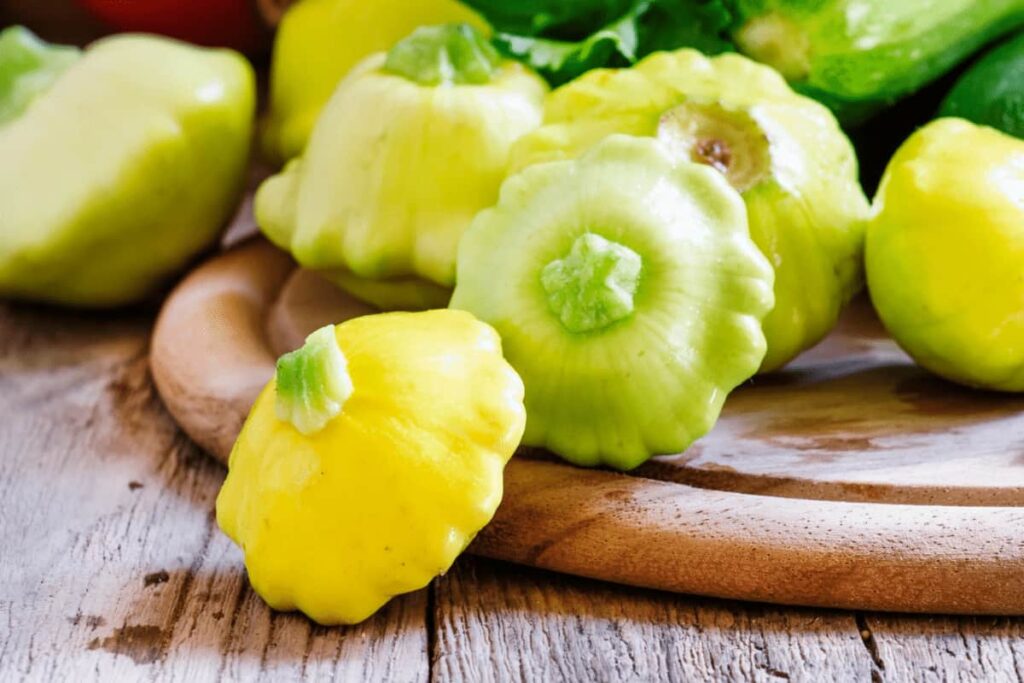Botanically known as Cucurbita pepo var. clypeata and belonging to the family Cucurbitaceae (Gourd Family), Pattypan Squash has earned other charming names such as granny squash and custard squash. These names reflect its versatility in both sweet and savory dishes.

Growing Pattypan Squash
Overview of Growing Pattypan Squash
What is Pattypan Squash?
Pattypan Squash, also called scallop squash, is a delightful summer vegetable that adds both beauty and flavor to your garden. With its vibrant colors, it’s no wonder why this traditional variety has become a favorite among gardeners.
Varieties of Pattypan Squash
Growing Pattypan Squash is a rewarding experience that yields beautiful results on your dinner table. There are several varieties of Pattypan Squash to choose from: Early White Bush Scallop with its pale hue; Sunburst with its striking bright yellow color; Bennings Green Tint with its lovely light green skin; and Peter Pan, which boasts a beautiful blend of creamy white and pale green tones.
Getting Started: Preparing Your Garden
Choosing the Right Location
Choosing the right location is important for a successful harvest. These plants thrive in full sun, so find an area that receives sunlight for about 6 to 8 hours daily. Avoid planting them in shaded or overcrowded spaces, as this can hinder their growth and productivity.
Soil Preparation and Requirements
Before planting your Pattypan Squash, it’s important to prepare the soil properly. Start by removing weeds from the area where you plan to plant them. Loosen the soil using a garden tiller, breaking up any clumps and ensuring good drainage. Pattypan Squash prefers well-drained soil with a pH level between 6.0 and 7.5.
You can test your soil’s pH using a home testing kit available at most gardening centers. If necessary, amend the soil with organic matter to improve its fertility and structure. Once your soil is prepared, create small mounds or raised beds for planting Pattypan Squash seeds or seedlings. This will help improve soil drainage while also providing better air circulation around the plants.
Planting Your Pattypan Squash
When to Plant Pattypan Squash
Knowing the right time to plant your Pattypan Squash is crucial for a successful harvest. These warm-season vegetables thrive in temperatures between 21-29°C. So, it’s best to wait until the frost has passed before planting them outdoors.
Seed Starting Indoors vs. Direct Sowing Outdoors
To begin indoor Pattypan Squash seed starting, fill seed trays with well-draining potting mix. Place one or two seeds about an inch deep in each container and keep them moist but not waterlogged. Place the containers in a warm area with plenty of sunlight or under grow lights if necessary.
Once your seedlings have developed their second set of true leaves and there’s no more risk of frost, it’s time to transplant them into your garden beds or containers outdoors. Alternatively, if you prefer direct sowing, sow the seeds directly into prepared soil after all danger of frost has passed.
Caring for Your Pattypan Squash Plants
Watering Needs
Caring for your Pattypan Squash plants is essential to ensure a bountiful harvest. One important aspect of caring for your plants is meeting their watering needs. Pattypan Squash plants require consistent moisture, especially during the hot summer months. Regular watering helps prevent wilting and promotes proper development.
Mulching and Weed Control
Mulching plays a main role in maintaining the plant health. Applying an organic mulch layer around the base of the plants helps retain soil moisture, suppresses weed growth, and regulates soil temperature. Mulching adds soil nutrients as it breaks down over time. Keeping weeds under control is vital for optimal plant growth. Weeds compete with Pattypan Squash plants for water, nutrients, and sunlight. Regular weeding not only ensures that your squash receives all these essential resources but also reduces the risk of pests and diseases.
Fertilizing for Healthy Growth
To promote healthy growth and fruitful yields, fertilizing your Pattypan Squash plants is crucial. Use balanced fertilizer or compost rich in nitrogen, phosphorus, and potassium when planting or side-dressing during the growing season. Follow instructions on packaging carefully to avoid over-fertilization, which can harm the plant.
In case you missed it: Best Fertilizer for Squash: What, When, and How to Apply

Providing adequate water and using mulch as a protective barrier against weeds while enriching soil fertility through timely fertilization will help you cultivate vigorous Pattypan Squash plants ready to reward you with an abundant harvest.
Pest and Disease Management
Common Pests and How to Control Them
Common pests that can affect Pattypan Squash include aphids, cucumber beetles, and squash bugs. These pesky critters can damage the leaves, stems, and fruits of your plants. To control them, you can use organic insecticides or try natural remedies like neem oil spray or introducing beneficial insects into your garden.
Preventing and Managing Diseases
powdery mildew is a common disease affecting Pattypan Squash. This fungal infection manifests as a white powdery coating on the leaves and can eventually stunt plant growth. To prevent this disease, make sure your squash plants have suitable air circulation by spacing them properly. You can also apply fungicides labeled for powdery mildew prevention if needed.
Another potential disease is blossom end rot, which causes dark spots at the bottom of the fruit due to calcium deficiency in the soil. To avoid this problem, maintain consistent soil moisture levels by watering regularly and ensuring proper drainage.
Pollination: Ensuring a Good Harvest
The Role of Bees in Pollination
Bees are nature’s best pollinators and are attracted to the bright yellow flowers of the Pattypan Squash plant. As they collect nectar from these vibrant blossoms, they transfer pollen from one flower to another.
Hand Pollination Techniques
The hand pollination process involves using a small brush or cotton swab to carefully transfer pollen from the stamen (male part) of one flower onto the stigma (female part) of another flower. Hand pollinating your Pattypan Squash plants not only ensures successful fertilization but also increases your chances of getting larger fruits with more seeds. It’s an easy and rewarding task that can be done during the early morning hours when flowers are open and before bees start their busy day.
Pruning and Training Pattypan Squash
Why Prune Pattypan Squash Plants?
Pruning helps to promote plant air circulation, reducing diseases such as powdery mildew. By removing excess foliage, you allow sunlight to reach all parts of the plant, which aids in photosynthesis and overall growth. Pruning can help manage the plant’s size and shape. These vigorous vines tend to sprawl and take up valuable garden space. By selectively removing some branches or using trellises for support, you can keep them more compact and organized.
Training Squash on Trellises
Training your squash on trellises not only saves space but also makes harvesting easier by keeping the fruit off the ground. It also prevents pests from accessing your precious squashes easily. When training on a trellis, gently guide the vines upward while they’re still young and flexible. You may need to tie them loosely with soft twine or use clips to secure them to the structure.
In case you missed it: How to Tell When Squash and Pumpkins are Ready to Harvest

Harvesting Pattypan Squash
Signs Your Pattypan Squash is Ready to Harvest
When it comes to harvesting your Pattypan Squash, timing is everything. Well, there are a few signs to look out for. Pattypan Squash should be about 2-3 inches in diameter for optimal tenderness. Anything larger than that might be too mature and lose its delicate flavor.
Depending on the variety you planted, Pattypan Squash can come in different color shades of green, yellow, or even white. When the skin has a vibrant hue and feels firm to the touch, it’s a good indication that your squash is ripe and ready for harvest. Don’t forget about the stem. If it’s still attached firmly and doesn’t easily snap off when you twist gently, then your squash needs more time on the vine.
Harvesting and Handling Tips
For harvesting, using a sharp knife or pruning shears, cut the stem above where it connects with the fruit. Be careful not to damage neighboring vines or other fruits in the process. Once harvested, handle your precious bounty with care. Pattypan Squash can bruise easily if mishandled or dropped. Place them gently in a basket or container lined with soft material like hay or newspaper to cushion any impact during transportation. Remember that freshly picked Pattypan Squash tastes best when consumed within a few days after harvest.
In case you missed it: Growing Chayote Squash, Cultivation Practices

Conclusion
Pattypan Squash is a delightful summer vegetable that comes in various vibrant colors. Not only are these little beauties delightfully versatile in the kitchen, but they also add beauty to any garden. Caring for your Pattypan Squash plants is crucial in ensuring healthy plant growth.
- Crops Grown in Summer Season: Best Choices for Summer Gardening
- Organic Pest Control for Tomato Farming
- How to Maximize Sheep Farming Profit
- Broccoli Varieties: Choosing the Right Cultivars for Your Farm
- How to Raise Pigs in Your Own Backyard: A Comprehensive Guide
- Budget Friendly Sheep Shed Ideas: Cheap and Low-Cost Tips
- How Much Do Cattle Farmers Make: Revenue Streams in Cattle Farming
- Management Pests and Diseases in Your Cotton Field
- Sheep Farming Business Plan for Beginners
